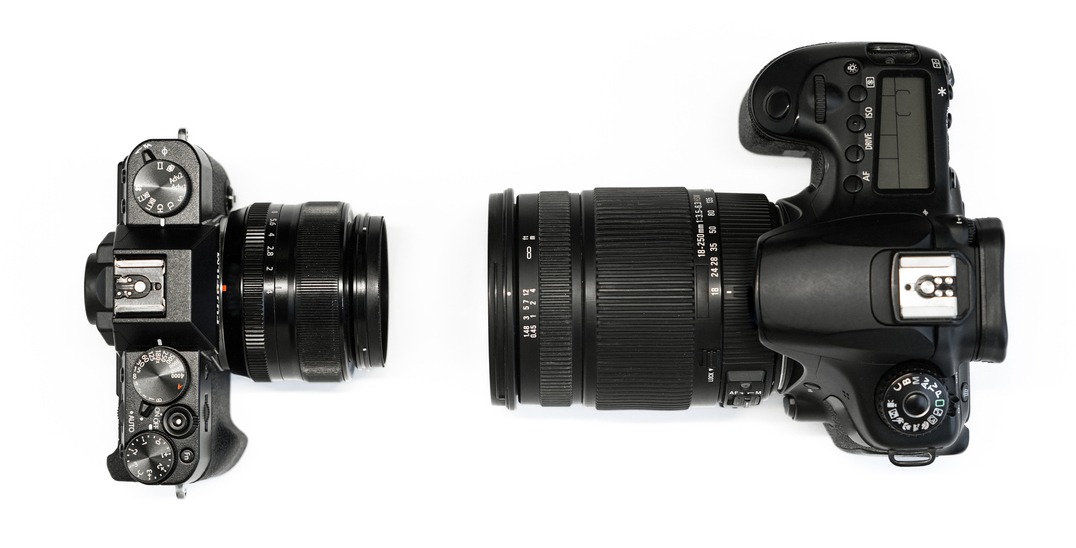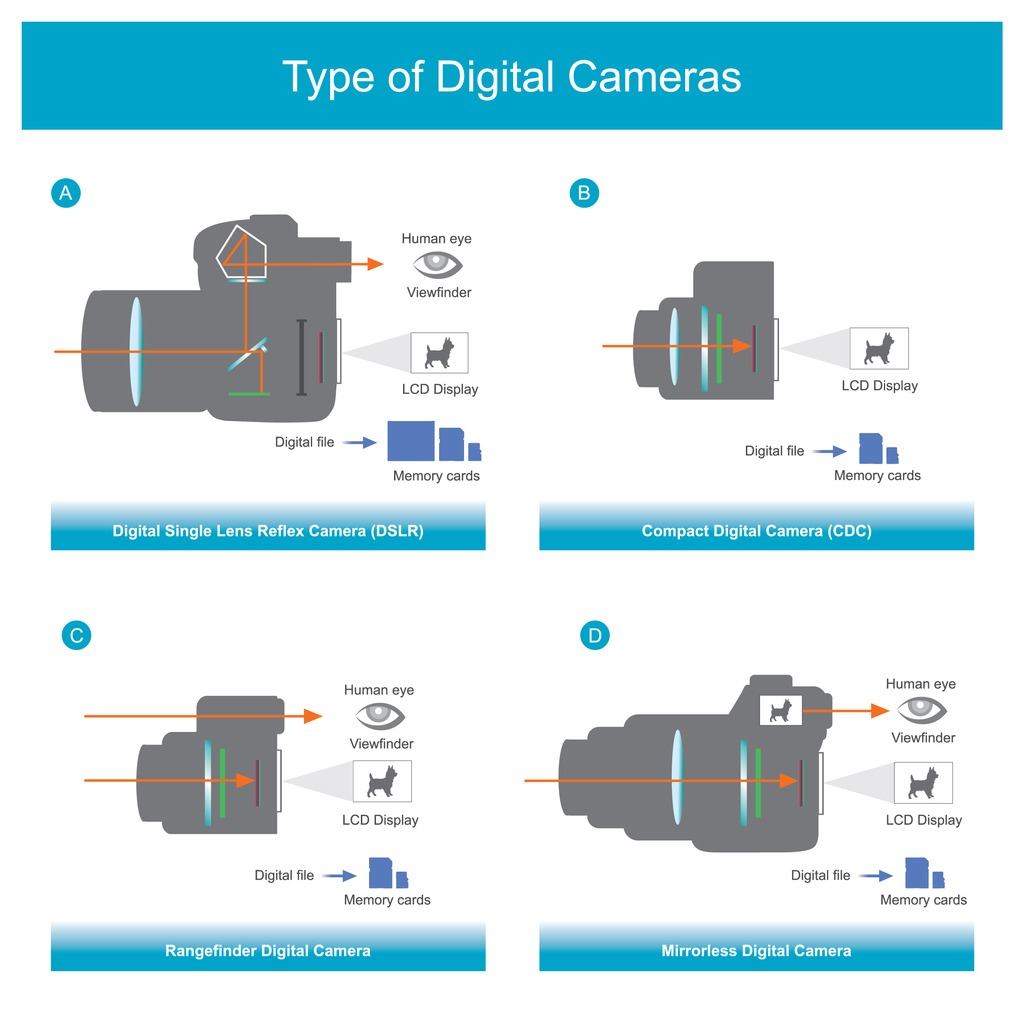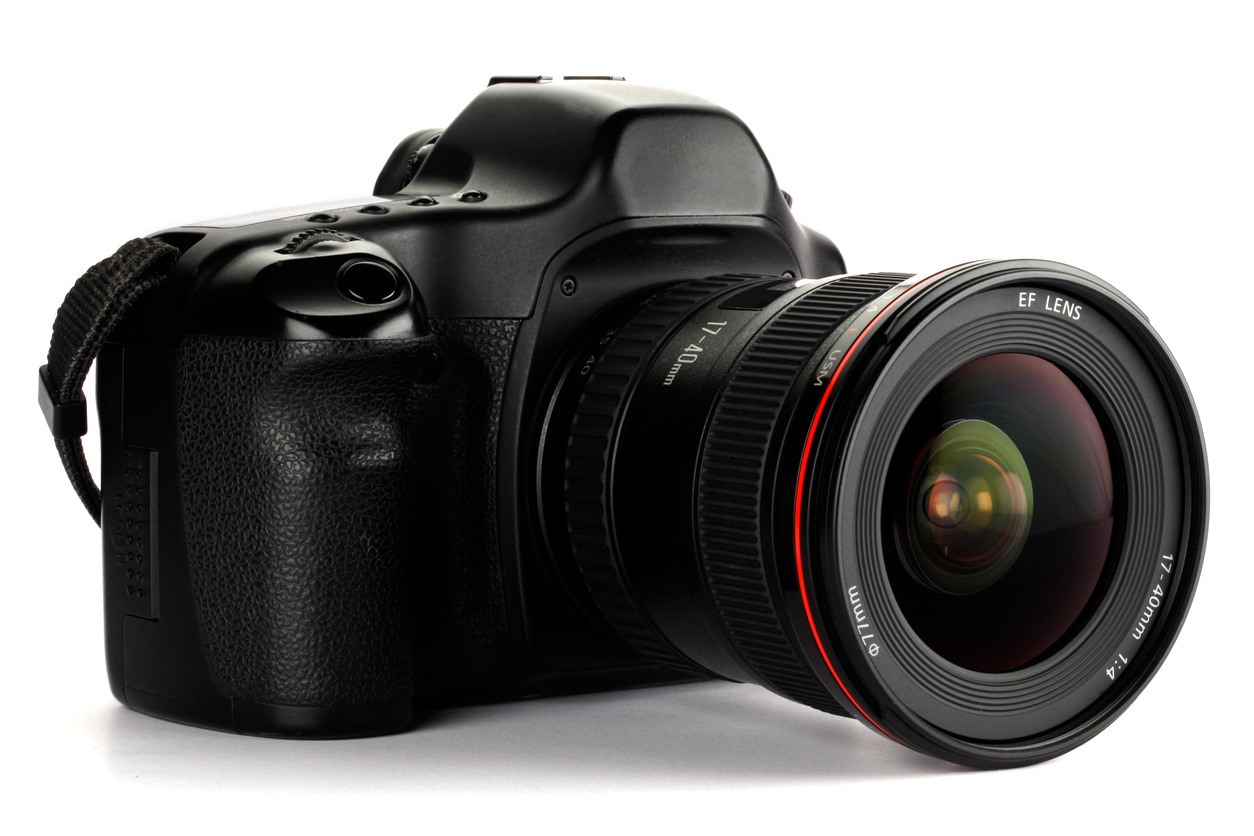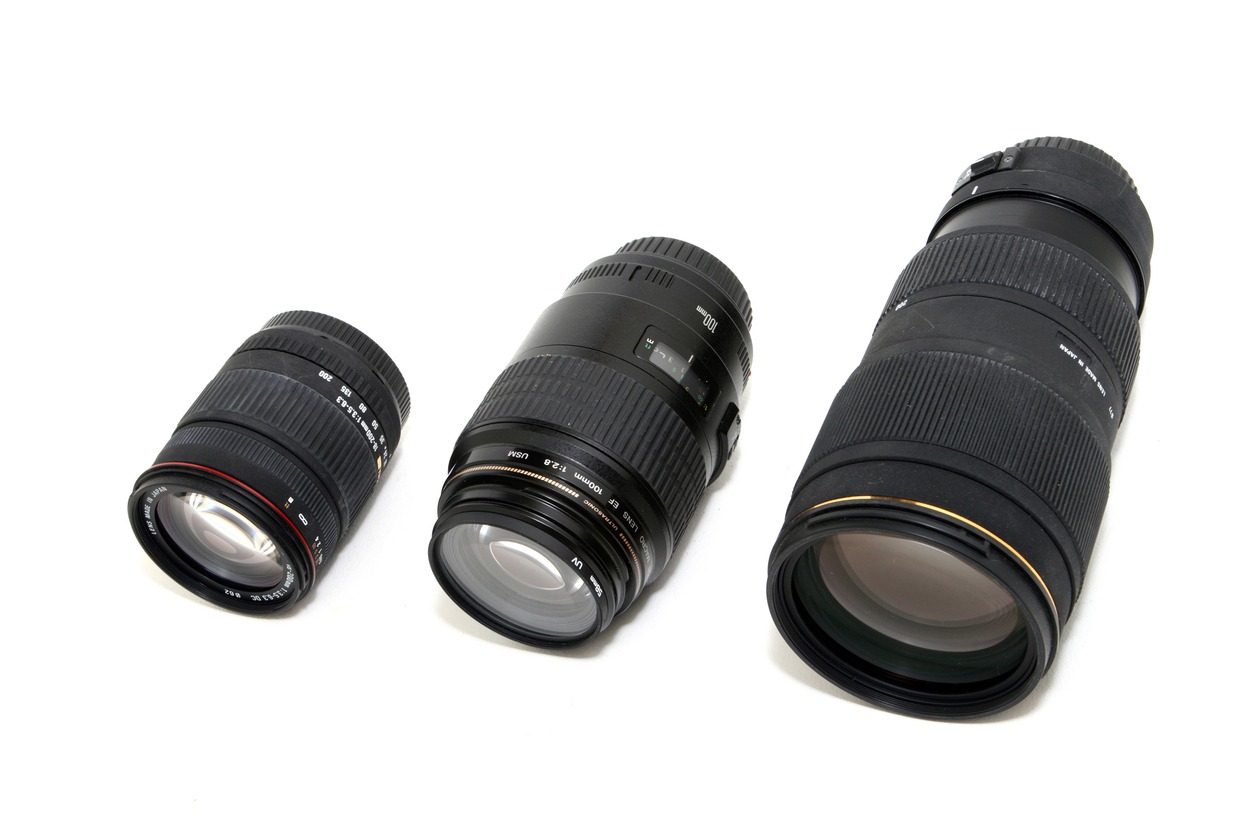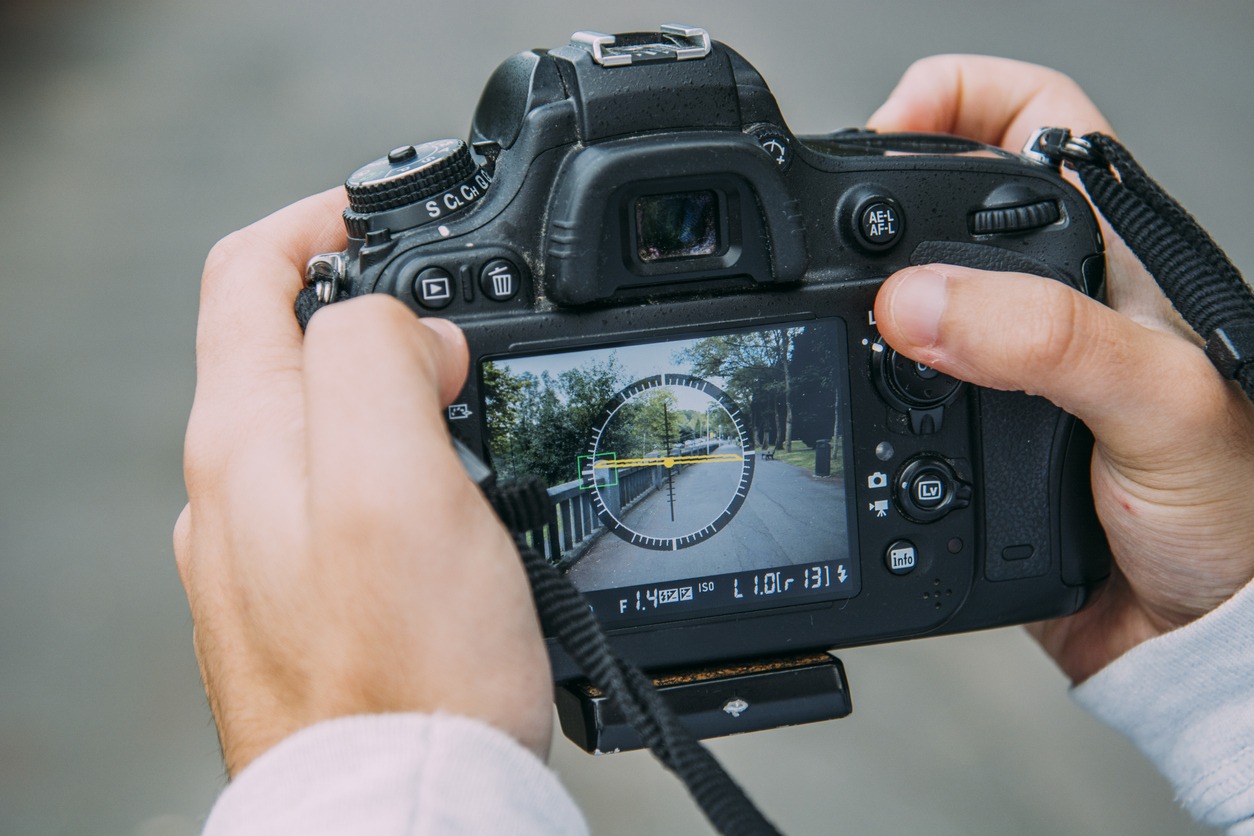If you’re someone about to buy a camera, you might have heard differing opinions or suggestions regarding whether to buy a mirrorless or DSLR camera. As with other things, each has its own pros and cons and the answer mainly depends on your own requirements and budget.
However, it is also true that mirrorless cameras are increasingly gaining popularity. They’re at the forefront of technology and innovation. Moreover, since DSLR cameras have been around for so long, they’re not getting as much attention as they used to. That’s why it’s important to understand the differences between them and their pros and cons before coming to any conclusion.
Mirrorless vs. DSLR Camera: How do they Operate?
Before learning more nuanced differences between mirrorless and DSLR cameras, let us first understand the fundamental operational difference between these two.
DSLR stands for Digital Single-lens Reflex. It evolved from the traditional SLR cameras, which uses an imaging sensor instead of old-school photographic film. The light enters a DSLR camera through a lens, reflects off a mirror inside, and passes through the pentaprism. It then forms an analog image on the optical viewfinder (OVF). When you click the button to capture the image, the mirror flips down and lets the light pass through to fall on the image sensor.
Even though a mirrorless camera also uses digital technology, it doesn’t have a mirror inside like a DSLR. As a result, these cameras don’t have an optical viewfinder but rather an electronic viewfinder(EVF). The light that falls on the image sensor also creates a digital image on EVF, giving you a preview of how the photograph will look like.
Differences Between DSLR and Mirrorless Cameras
To better answer the question “DSLR vs. mirrorless cameras: which is best for you?”, we need to look closely at the differences between the both.
1. Weight and Size
Weight and size is probably the most noticeable difference between mirrorless and DSLR cameras. Since a mirrorless camera doesn’t need to house a mirror, pentaprism, and other heavy parts, it is lighter in size and weight than a DSLR. This can be useful for people who need to move a lot during photography or prefer convenience and portability.
However, a heavier camera like a DSLR has its advantages. If you’re working with big lenses, the camera’s weight will help you balance out the weight of the lens. This can make photography more stable. Installing bulky lenses on a lighter mirrorless camera can make it harder to balance.
2. Lenses
If your photography involves having a variety of lenses, a DSLR camera might be the better option. Since they have dominated the market for so long, DSLRs have a wider selection of lenses with different sizes, zoom capabilities, and features.
In terms of lens variety, mirrorless cameras are still playing catch up, and fewer options are available. Moreover, if you want to attach a DSLR lens to your mirrorless camera, you need to invest in an adapter to make it compatible. Using an adapter can also negatively affect the quality and features like zoom, focal point, and camera autofocus. For these reasons, it is safe to say that for the time being, a DSLR is a better choice when it comes to lens variety and compatibility.
3. Battery Life
Since mirrorless cameras are smaller in size, their batteries are too. Therefore, traditional DSLR cameras have an edge in terms of battery life. But there’s more to it. Unlike DSLRs, which can switch to sleep mode and still give you a preview through OVF, mirrorless cameras have to consume battery juice to power up the EVF, sensors, and other electronic parts. They don’t go to “deep sleep” like DSLRs and consume battery, which results in a shorter battery life. Carrying extra batteries is one solution, but if portability was the main objective, it defeats the purpose.
4. Price
Since DSLRs have been in the market for so long, their prices are more competitive. You can find a reasonably priced DSLR camera with plenty of useful features and specifications for amateur use. Deals for used DSLRs are even more attractive, which you might not be able to find on mirrorless cameras.
Since mirrorless cameras are less mainstream, finding a feature-studded mirrorless camera at a reasonable price can be challenging. If you choose a cheaper model, you might have to compromise on quality and features.
The difference in pricing mainly exists between low to mid-tier DSLR and mirrorless cameras. As you move towards more professional and purpose-built products, you’ll find that DSLRs and mirrorless cameras are similar in pricing and features.
5. Viewfinder
An EVF(Electronic Viewfinder) is a more accurate representation of what the image will look like once captured. It creates an electronic preview that takes into account in-camera settings like ISO, shutter speed, white balance, etc.
On the other hand, an OVF(Optical Viewfinder) in a DSLR shows the image as it is falling on the lens. The final captured image might differ from what you see in the viewfinder.
So choosing between DSLR or mirrorless cameras in terms of viewfinder comes down to personal preference. One is not inherently better than the other as DSLR’s viewfinder has its own advantage (mainly less battery consumption).
6. Shooting in the Field
To analyze how good the on-field shooting experience of a camera is, we need to take three aspects into account.
- Size
- Low-light Shooting
- Autofocus
Even though mirrorless is clearly better in terms of size and portability, more and more compact DSLR cameras are appearing in the market. However, if you’re going to be working with bulky lenses, the size of the camera is going to make little difference.
DSLRs are known for their ability to shoot in low-light conditions with promising autofocus capabilities. You’ll find many products that can do this for you in the field. However, the mirrorless industry is not far behind. Manufacturers are introducing more and more products with better low-light photography and autofocus capabilities. However, it might still take some time to reach the level of innovation DSLRs are already offering. Ultimately, it is about creating the right balance, and you’ll be the one to decide what’s best for you based on your particular needs and personal preferences.
7. Image Quality
When it comes to image quality, both types of cameras come loaded with features like autofocus, high resolution, and low-light shooting. As a result, it is difficult to say that one is better than the other.
Some people try to differentiate DSLR and mirrorless cameras based on sensor size. However, both types feature standard sensor sizes like APS-C, medium format, Four Thirds, and 35mm full frame. Therefore, both DSLR and mirrorless cameras are similar in terms of sensor size, FoV, aperture and so on.
8. Video Quality
Mirrorless cameras are considered better in terms of video quality because even their affordable models feature 4K and UHD recording capability. On the other hand, if you look for the same features in the DSLR category, you’ll have to pay a premium price.
9. Image and Video Playback
When it comes to image and video playback options, both camera types have something unique to offer.
For example, some Olympus mirrorless cameras feature a rear-tilting touchscreen display. On the other hand, higher-end DSLR cameras feature an articulating playback screen, which can be especially useful in professional applications.
Generally speaking, most DSLR and mirrorless cameras are similar when it comes to image viewing and video playback. They also feature an HDMI port to connect the camera to a monitor or a Television.
Advantages and Disadvantages of DSLR Cameras
| Advantages of DSLR Cameras | Disadvantages of DSLR cameras |
| ● DSLR cameras have bigger batteries and have sleep features, which gives them a longer battery life.
● DSLR cameras have an edge in lens variety because of being in the market for such a long time. ● Lower-end DSLR cameras are affordable and offer good features. ● DSLRs are a clear choice for photographers who prefer an optical viewfinder. |
● DSLR cameras have had their fair share of time. This means there are fewer new releases.
● DSLR cameras tend to be big and heavy due to the mirror and pentaprism. Working with large lenses makes them even bulkier. ● The 5-axis IBIS (In Body Image Stabilization) is rare in DSLR cameras. |
Advantages and Disadvantages of Mirrorless Cameras
| Advantages of Mirrorless Cameras | Disadvantages of Mirrorless Cameras |
| ● Mirrorless cameras don’t have mirrors and a pentaprism. They also usually have smaller batteries, which makes them lighter and more compact.
● Mirrorless cameras have better video-recording capabilities, even in the budget segment. ● 5-axis IBIS is common in mirrorless cameras. |
● The batteries of mirrorless cameras are smaller in size and their sensors and internal electronics consume more energy. As a result, mirrorless cameras have a shorter battery life.
● The variety of lenses available for mirrorless cameras is limited compared to DSLRs. ● Mirrorless cameras may not be ideal for people who prefer an optical viewfinder and the traditional looks and feel of a camera. |
Conclusion
Today, all the major camera brands have their products in DSLR and mirrorless categories. The differences between these types can sometimes seem blurry. However, each type is ahead in a particular category. For example, if portability, compactness, and high video quality are things you’re looking for, you can’t go wrong with a mirrorless camera. On the other hand, DSLRs have a distinct advantage in terms of lens variety, price point, battery time, and low-light shooting. Both are almost similar in image quality, but mirrorless cameras might keep surprising us as they’re still evolving and are yet to peak innovation.
